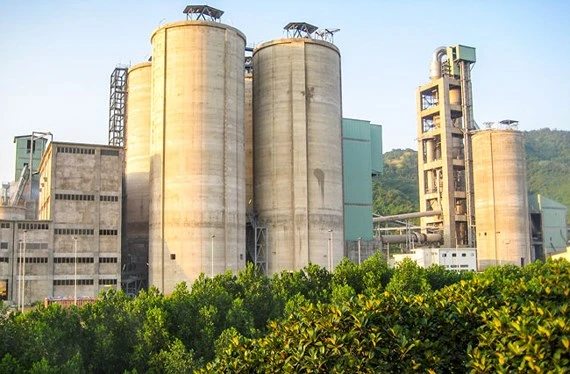
More debts than assets
In its General Shareholders Meeting (AGM), Vinaincon just announced continuous losses to the tune of VND 95bn in 2019, in a third consecutive year of loss making.
According to the audit financial statement of 2018, Vinaincon did not achieve its target in revenues and profits. The company revenues reached VND 3,251bn, showing loss of VND 284.7bn in 2018.
According to the audit financial statement of 2018, Vinaincon did not achieve its target in revenues and profits. The company revenues reached VND 3,251bn, showing loss of VND 284.7bn in 2018.
According to the management, Quang Son Cement, a unit of Vinaincon, is expected to continue facing huge losses in 2019. At the end of 2018, total assets of Vinaincon were valued at VND 6,062bn but total liabilities were VND 6,421bn, causing owner equity to be negative at VND 358bn. However, Vinaincon management did not have any solution for Quang Son Cement. The Board of Directors only suggested that the Board of Compulsory control the costs to reduce the losses.
Currently, Vinaincon does not have a plan to pay dividends or contribute to other development or financial funds of the company. The decision on these issues will be made based on the performance in 2019.
Previously, the Ministry of Finance prepared a report on the performance of Vinaincon. As per the report, the company has not been operating effectively for a long time, leading to continuous losses in government investment capital as well as in Vinaincon investment capital in other companies. Vinaincon was proposed to be added on to the restricted list.
Vinaincon was established in 1998 based on the decision of the Ministry of Industries and Trade. Vinaincon has operated as a joint stock company since June 2011. The company has been the main EPC contractor for many big projects of Ministry of Industries and Trade. Some projects of Vinaincon include Thai Nguyen Cement and Quang Son Cement. These projects have investment capital of many thousands of Vietnam dong.
However, so far, the performance of Vinaincon has been mostly ineffective. The losses at Quang Son Cement are a marked case of bad performance of the company.
Unable to resolve debts
Finding solutions to resolve the debts at Vinaincon has been under discussion for a long time. Vinaincon was initiated as Thai Nguyen Cement where Vinaincon was the developer with total investment capital of VND 3,500bn and total capacity of 1.51mn tons per year. The project was kicked off in March 2003 but it was only completed in 2009.
The plant has run commercially since July 2011 under the brand name Quang Son Cement, but its performance since then has only shown huge losses. At the end of 2018, total debts of Quang Son Cement stood at VND 3,637bn and total accumulated losses were at VND 1,400bn. The company is unable to pay its debt and is at risk of bankruptcy. In 2019, Quang Son Cement plans to see revenue of VND 1,169bn and face loss of VND 159.3bn. This loss does not include the loss from FX activities.
According to Dinh Trong Thinh, soon as we know the reasons for the losses, we should resolve them completely. Holding on to losses has a negative impact on performance and manufacturing activities of the entire business.
In 2018, Quang Son Cement was being proposed to transfer to Vietnam Cement Industry Corporation (VICEM) to restructure; however, VICEM has refused. Explaining this decline, VICEM said that the company is busy resolving problems of Ha Long Cement (which was transferred from Song Da Corporation) and Song Thao Cement (which was transferred from Housing and Urban Development Corporation-HUD). If VICEM has to carry another loss of Quang Son Cement, VINCEM will not be able to do privatization and IPO as scheduled.
According to the Ministry of Construction, Vinaincon is a joint stock company. It owns 100% of Quang Son Cement and this investment should be the capital of the joint stock company, not of the government. Hence, the suggestion of the Ministry of Industries and Trade to transfer Quang Son Cement from Vinaincon to VICEM in a way that Quang Son will absorb the government investment capital at VICEM and be deducted from government investment capital at Vinaincon is not suitable with prevailing regulations.
Many experts think that if the government does not resolve the problems at Quang Son Cement and Vinaincon completely, the situation will worsen, especially the ability to pay debt to Ministry of Finance and Development Bank of Vietnam. The risk of loss to government investment capital is very high.
However, it is not easy to restructure Quang Son Cement as the company is carrying too huge a debt, about 95% of investment capital. Furthermore, the plant is located in an inconvenient location creating difficulties for transportation and causing an increase in costs of other activities.
According to Asst. Professor, Dr. Dinh Trong Thinh, Lecturer at International Finance Faculty of Academy of Finance, the accumulated loss of Quang Son Cement created a barrier for restructuring the company. If the government cannot reform the company, it should consider leasing it out to the private sector. Privatization, to sell a part of the government stake is another way out. If there is no lessee, government should consider selling the whole company to collect investment capital, even if it is very small.




















